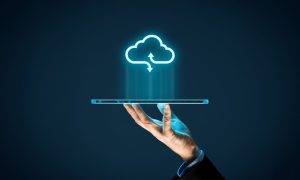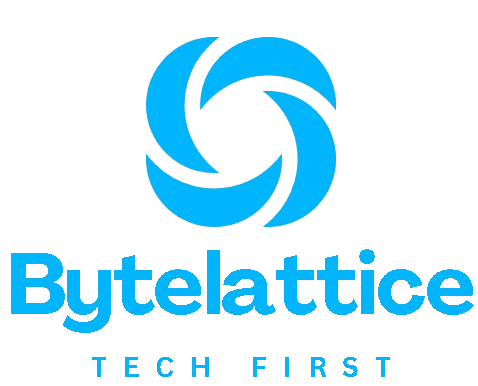
How To Enhance Personalized Education With Cloud-based Learning Platforms
Education isn’t one-size-fits-all anymore. The traditional classroom model, where every student follows the same pace and learning style, has become outdated in our digital age. Cloud-based learning platforms are revolutionizing the approach to personalized education, creating tailored experiences that adapt to each learner’s needs, preferences, and learning journey.
This article examines the transformative potential of cloud-based educational technologies and their impact on the future of education. We’ll discuss the role of artificial intelligence, big data analytics, and collaborative learning environments in creating truly personalized learning experiences. You’ll discover practical strategies for implementing these technologies while addressing common challenges in cloud-based education.
Role of Cloud-based Learning Platforms
Cloud platforms have fundamentally transformed the way educational content is delivered and consumed. Unlike traditional Learning Management Systems that operate on local servers, cloud-based solutions offer unprecedented scalability and accessibility. Students can access their personalized learning environments from anywhere, at any time, using any device with internet connectivity.
These platforms collect vast amounts of student data, tracking everything from learning patterns to engagement levels. This continuous monitoring provides educators with valuable insights into student performance and behavior. The data reveals which teaching methods work best for individual students and helps identify areas where learners struggle most.
Educational institutions are witnessing considerable success with cloud-based adaptive learning platforms. For instance, Arizona State University reported an 18% increase in course completion rates after implementing personalized learning technologies. Students demonstrated improved academic performance when their learning paths were tailored to their learning styles and pace.
The Convergence of AI and Cloud Technology\

Artificial intelligence has become the backbone of modern personalized education. AI-driven systems analyze learner interactions and create detailed learner profiles that inform content delivery decisions. Machine learning algorithms process student responses in real time, adjusting difficulty levels and suggesting alternative learning resources based on performance patterns.
Generative AI tools create personalized content that matches individual student needs. These AI-powered recommendation engines work similarly to how Netflix suggests movies – they analyze your learning history, preferences, and goals to recommend the most suitable learning choices. The technology can generate custom lesson plans, practice problems, and even entire courses tailored to specific career goals.
Intelligent tutoring systems provide instant feedback that traditional methods cannot match. Students receive immediate responses to their questions and mistakes, preventing the formation of incorrect understanding. This real-time feedback loop significantly accelerates the learning process and enhances student engagement.
Utilizing Big Data Analytics
The power of cloud-based platforms lies in their ability to process enormous amounts of student data simultaneously. Every click, pause, and interaction generates data points that contribute to a comprehensive understanding of the learning process. This data-driven approach enables educators to make informed decisions about curriculum design and instructional strategies.
Predictive analytics help identify students at risk of dropping out or falling behind. By analyzing patterns in student behavior and performance, these systems can flag potential issues before they become serious problems. Instructors receive alerts when students exhibit signs of disengagement or struggle with specific concepts, enabling timely intervention.
Real-time insights transform how educators approach differentiated instruction. Teachers can instantly see which students need additional support and which are ready for more challenging material. This level of granular data wasn’t possible with traditional assessment methods, which typically provided feedback weeks after assignments were completed.
Enhancing Accessibility and Flexibility
Cloud-based learning platforms break down geographical and temporal barriers to education. Students in remote areas can access the same high-quality educational resources as those in urban centers. This equitable access is vital for K-12 education and special education, where individualized attention is crucial for student success.
Visual learners benefit from rich multimedia content, while auditory learners can access podcasts and recorded lectures for optimal learning. The platforms automatically adjust content presentation based on detected learning preferences. Students with busy lives can learn at their own pace, pausing and resuming their educational journey as needed.
Flexible learning opportunities extend beyond traditional academic subjects. Vocational education programs use cloud platforms to provide hands-on training through virtual reality tools and augmented reality experiences. These technologies create immersive learning environments that simulate real-world scenarios without the associated costs or risks.
Collaborative Learning through the Cloud
Modern cloud platforms facilitate social interaction and peer learning in ways that enhance the educational experience. Students can collaborate on projects, share resources, and participate in discussion forums regardless of their physical location. This collaborative approach mirrors the teamwork skills needed in today’s workplace.
Remote learning capabilities proved essential during the COVID-19 pandemic, but their benefits extend far beyond crisis management. Students can connect with experts and peers from around the world, expanding their perspectives and learning opportunities. The technology enables seamless integration of local and global educational resources.
Group projects become more manageable when students can access shared workspaces and collaborate in real time. Cloud-based tools track individual contributions to group efforts, ensuring fair assessment and accountability. This transparency helps develop both academic skills and professional collaboration abilities.
Addressing Challenges in Cloud-based Education
Implementation of cloud-based educational technologies isn’t without obstacles. Technological infrastructure requirements can be significant, particularly for institutions with limited budgets. Not all schools have reliable internet connectivity or sufficient devices for every student. These digital divides can exacerbate existing educational inequalities.
Academic integrity concerns arise when students complete assessments remotely. Traditional proctoring methods are ineffective in virtual environments, necessitating innovative alternative assessment methods. Educators must strike a balance between the flexibility of online learning and the need to maintain rigorous academic standards.
Privacy and data security represent major concerns for educational institutions. Cloud services handle sensitive student information, requiring robust security measures and compliance with educational privacy regulations. Managed Service Providers specializing in educational technology can help institutions navigate these complex requirements while maintaining data protection standards.
Ensuring Equity and Efficiency
Successful implementation of personalized learning platforms requires careful attention to equity issues. Not every student has access to high-speed internet or modern devices at home. Educational institutions must develop strategies to ensure that cloud-based learning doesn’t create or worsen achievement gaps between different student populations.
The role of instructors evolves in cloud-based environments. Teachers become learning facilitators and interpreters of data rather than simple content deliverers. Professional development programs help educators understand how to use data-driven insights effectively and make appropriate adjustments to lesson plans based on student analytics.
Cost-effectiveness becomes apparent when institutions achieve scale with cloud solutions. While initial setup costs can be substantial, cloud platforms often reduce long-term expenses by eliminating the need for extensive on-premises infrastructure. The efficiency gains from automated grading and personalized content delivery can offset implementation costs over time.
Future Trends in Personalized Education
The future of education lies in increasingly sophisticated AI-driven adaptive learning systems. These platforms will provide even more precise personalization, adjusting not just content difficulty but also presentation style, pacing, and assessment methods. Machine learning algorithms will become increasingly effective at predicting student needs and recommending optimal learning paths.
Expanding adaptive learning systems will incorporate biometric data to understand student engagement and stress levels in real time. This emotional intelligence will enable platforms to adjust content delivery and maintain optimal learning conditions. Students will receive support not just for academic challenges but also for emotional and motivational needs.
Innovations in EdTech and Cloud Services

The integration of virtual reality and augmented reality will create more immersive learning experiences. Students will be able to take virtual field trips, conduct simulated science experiments, and practice skills in a safe and controlled environment. These technologies will make abstract concepts more concrete and engaging for all types of learners.
AI-driven course recommendations will become more sophisticated, considering not just academic performance but also career aspirations, personality traits, and learning preferences. The systems will help students make better choices about their educational paths and prepare more effectively for their chosen careers.
Blockchain technology has the potential to revolutionize credential verification and academic record-keeping. Students will own their educational achievements in portable, verifiable formats that they can share with employers and other educational institutions seamlessly.
Conclusion
Cloud-based learning platforms represent a fundamental shift toward truly personalized education. These powerful tools combine artificial intelligence, big data analytics, and collaborative technologies to create learning experiences that adapt to individual student needs. While challenges exist around equity, infrastructure, and implementation, the benefits far outweigh the obstacles.
Educational institutions that adopt these technologies position themselves to serve their students better and prepare them for success in an increasingly digital world. The key lies in thoughtful implementation that prioritizes student outcomes while addressing potential barriers to access and success.
As we move forward, the integration of cloud-based, personalized learning will continue to deepen. The institutions and educators who master these tools today will shape the future of education tomorrow.
FAQs
What are cloud-based learning platforms?
Cloud-based learning platforms are educational systems hosted on remote servers that deliver personalized learning experiences through internet connectivity, allowing students to access content from anywhere.
How do AI and machine learning enhance personalized education?
AI analyzes student data to create individualized learning paths, provides real-time feedback, and adapts content difficulty based on performance patterns and learning styles.
What challenges exist in implementing cloud-based education?
The main challenges include meeting technological infrastructure requirements, ensuring equitable access, maintaining academic integrity, and protecting student data privacy.
How do these platforms improve student engagement?
They provide instant feedback, adaptive content, collaborative tools, and flexible learning schedules that match individual preferences and learning styles.
What role do educators play in cloud-based learning environments?
Teachers become learning facilitators and data interpreters, using analytics to guide instruction and provide targeted support to individual students.
